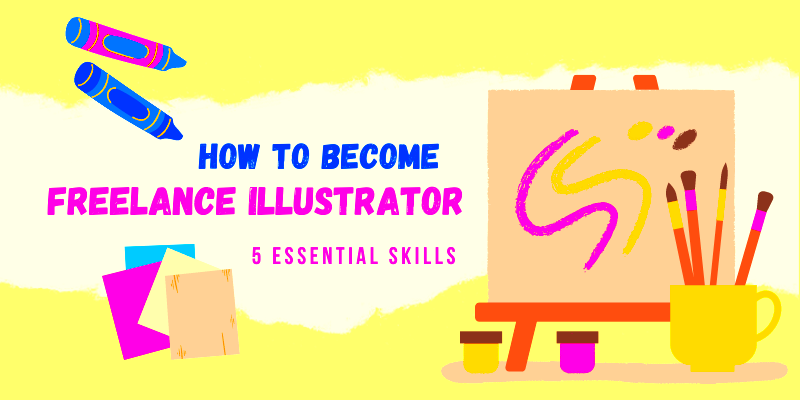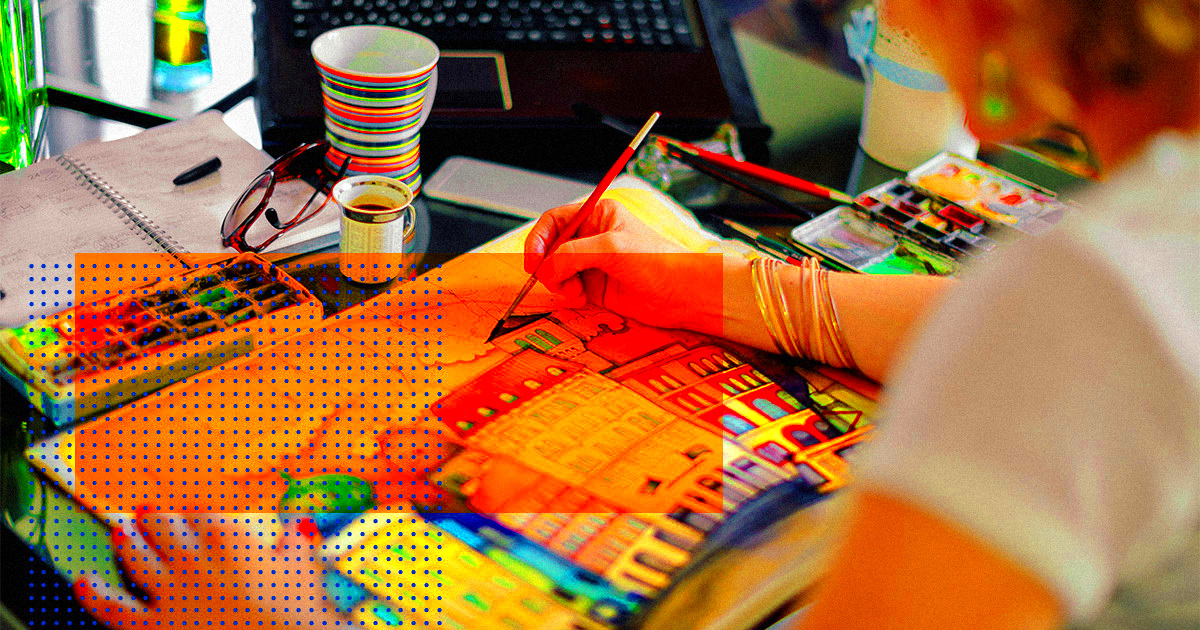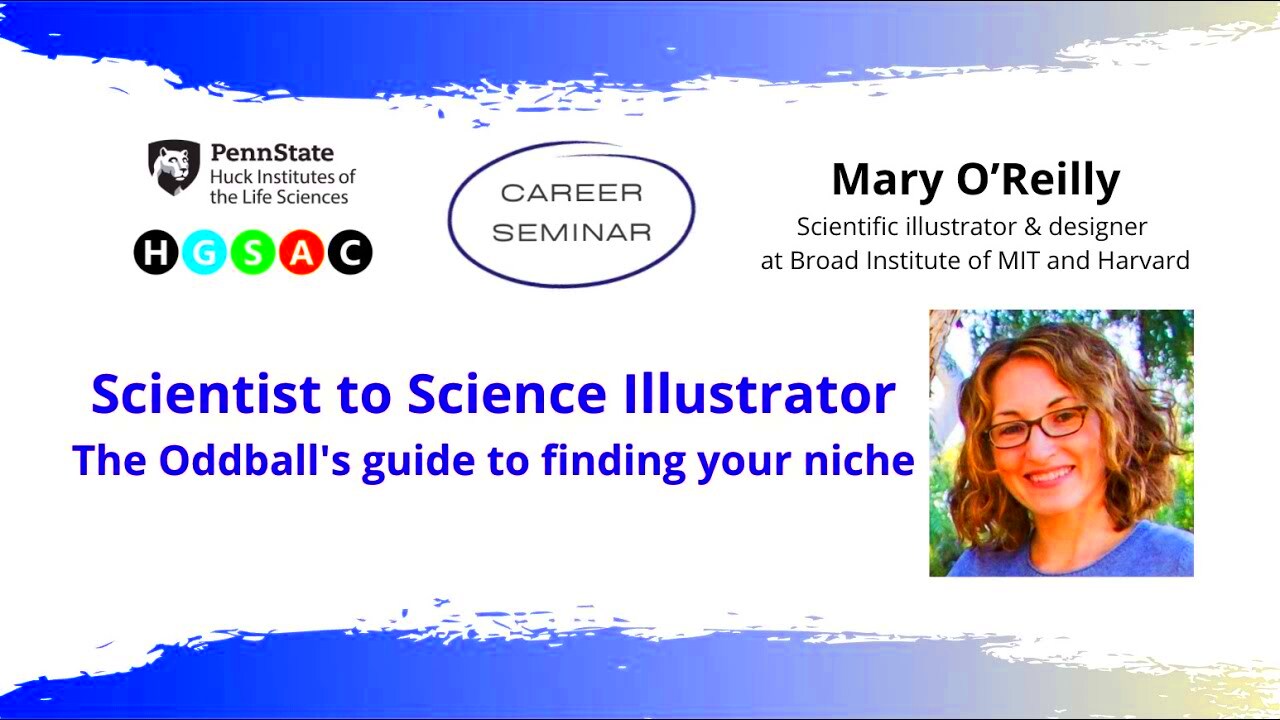Art and science come together in a special way in freelance scientific illustration. It entails the creation of detailed visuals that communicate complicated ideas from different scientific fields. These images are vital for research, education and publishing whether one is illustrating a new species or depicting intricate biological processes. Working as an independent illustrator provides one the opportunity to work with scientists, researchers and publishers to bring their ideas to life. This implies that accuracy, creativity and effective communication should be valued in this profession.
Essential Skills Needed for Scientific Illustrators

Acquiring certain vital abilities is fundamental for freelance scientific illustrators to thrive:
- Artistic Skills: Mastery in various artistic techniques, including drawing, painting, and digital illustration, is fundamental.
- Attention to Detail: Scientific illustrations require precision. You need to capture every detail accurately.
- Scientific Knowledge: Understanding the scientific principles behind your illustrations helps ensure accuracy. Familiarity with biology, chemistry, or other relevant fields is beneficial.
- Software Proficiency: Familiarity with illustration software such as Adobe Illustrator or Photoshop is crucial for creating professional-quality work.
- Communication Skills: You'll often collaborate with scientists and researchers. Being able to communicate effectively and understand their needs is essential.
Also Read This: Do You Tip on Fiverr? Understanding the Etiquette of Freelance Platforms
Building a Strong Portfolio for Freelance Work

As a freelance scientific illustrator, your portfolio is a slap-on-the-face weapon for you. A well organized portfolio showcases your talents while enticing potential customers. An impressive and effective one can be created in the following way:
- Choose Your Best Work: Include a variety of pieces that demonstrate your skills across different subjects and techniques.
- Showcase Different Formats: Include illustrations, infographics, and even animations if possible. This variety highlights your versatility.
- Provide Context: For each piece, briefly explain the project, the scientific concept illustrated, and your role. This helps potential clients understand your thought process.
- Update Regularly: Keep your portfolio current by adding new projects and removing older works that no longer represent your skills.
- Online Presence: Consider creating a website or using platforms like Behance or LinkedIn to showcase your portfolio and connect with potential clients.
By targeting these spots, you can build a robust portfolio that shows your skills well and pulls in new opportunities.
Also Read This: Best 10 Fiverr Gigs for Blog Writing in 2024
Finding Clients in the Scientific Community
Initially, it may appear that getting customers as a freelance scientific illustrator is an uphill task. But if you know where exactly to search for them, there are numerous opportunities in the extensive field of science. Establishing connections with researchers, teachers and academic bodies can result in successful partnerships. Therefore, to have an effective networking, you need to expose your talents at the right spots where future clients converge.
Strategies that will make it easy for you to get clients:
- Attend Conferences: Science conferences and symposiums are excellent places to meet potential clients. Bring business cards and be ready to showcase your portfolio.
- Join Professional Organizations: Becoming a member of groups like the Guild of Natural Science Illustrators can provide networking opportunities and resources.
- Connect on Social Media: Platforms like LinkedIn and Twitter are great for engaging with the scientific community. Share your work and participate in relevant discussions.
- Collaborate with Academics: Reach out to universities and research institutions. Many professors look for illustrators to help with publications and presentations.
- Offer Workshops: Conducting workshops on illustration techniques can help you connect with both students and professionals interested in your expertise.
You will have the opportunity, through participation in various scientific endeavors, not to just acquire clients but also gain popularity as a reputable drawer.
Also Read This: How to Start a Career as a Freelance Illustrator
Setting Your Rates as a Freelance Illustrator
Determining what amount you should earn as freelance scientific illustrator can be difficult. Your prices need indicate your expertise, experience and project difficulties. That’s why it is important to consider both sides of the coin ensuring clients are drawn in while at the same time getting paid well.
When it comes to your rates, think about this:
- Experience Level: If you’re just starting, you may need to charge lower rates to attract clients. As you gain experience and build a portfolio, you can gradually increase your prices.
- Project Complexity: Complex projects that require more time and skill should be priced higher. Consider the research involved and the detail needed in your illustrations.
- Market Rates: Research what other illustrators with similar skills charge. This can help you position your rates competitively.
- Client Type: Consider your client's budget. Academic institutions may have different funding than private companies. Adjust your rates accordingly.
Finally, be sure to communicate your rates explicitly. This would stop any possible miscommunication and create loyalty among clients.
Also Read This: Why Can’t I Join Fiverr? Common Issues and Solutions
Using Fiverr to Promote Your Illustration Services
Whenever you need help with someone’s project or looking for something, Fiverr is an excellent place where freelancers are available with various skills. It opens up the doors of opportunity as it lets artist present their artworks to more clients and also find individuals who need specific services.
This is how to use Fiverr in a better way:
- Create a Professional Profile: Your profile should include a clear, professional photo and a detailed description of your services. Highlight your background in scientific illustration.
- Build Attractive Gigs: List specific services you offer, such as illustrations for research papers or educational materials. Use engaging titles and descriptions to draw in clients.
- Showcase Your Work: Include samples of your best illustrations in your gig gallery. High-quality images can significantly impact potential clients' decisions.
- Encourage Reviews: After completing a project, ask clients to leave reviews. Positive feedback boosts your credibility and attracts more clients.
- Promote Your Gigs: Share your Fiverr gigs on social media and within professional networks. This can help drive traffic to your profile and increase visibility.
You can attract lot of clients by effective utilization of Fiverr, though you will also be revealing to them your talents in scientific illustration.
Also Read This: How to Report a Fiverr Account: A Step-by-Step Guide
Tips for Effective Communication with Clients
Your clients’ satisfaction is based on effective communication, which is important for a freelance scientific illustrator’s successful relationship. In addition to understanding what they want, clarity in communication ensures that the expectations are met. Therefore, strong communication skills can cause one to obtain additional orders from the same client or even get recommendations from them.
It is necessary to incorporate the following tips within your communication with clients in order for it to be more effective:
- Listen Actively: Take the time to listen to your clients. Understand their vision and goals for the project. This helps you create illustrations that align with their expectations.
- Ask Questions: Don't hesitate to ask clarifying questions if something is unclear. This shows your commitment to getting the project right.
- Set Clear Expectations: From the start, discuss timelines, deliverables, and payment terms. This prevents misunderstandings later on.
- Provide Regular Updates: Keep your clients in the loop throughout the project. Sharing progress updates can reassure them that you're on track and open to feedback.
- Be Open to Feedback: Encourage clients to provide feedback on your work. Constructive criticism can help you improve and create better illustrations.
- Follow Up: After completing a project, check in with your clients to see if they have any additional needs or feedback. This can lead to future opportunities.
You can develop long-lasting business associations with clients by enhancing your communicative abilities which subsequently boosts your freelancing profession.
Also Read This: Where to Find the Fiverr List
Common Challenges Freelance Scientific Illustrators Face
Freelancing as a scientific illustrator presents unique challenges. Although it may be a fulfilling profession, having an idea of possible obstacles enables one to handle them better.
Following are typical obstacles that you may face:
- Inconsistent Income: Freelancing often means variable income. Some months may be busy, while others are slow. It’s crucial to budget and plan for lean times.
- Client Expectations: Different clients may have varying expectations about timelines and quality. Managing these expectations requires clear communication and flexibility.
- Isolation: Freelancing can be lonely. Without coworkers, it’s easy to feel disconnected. Engaging with online communities can help mitigate this.
- Marketing Yourself: Finding clients and promoting your work can be time-consuming. Developing a marketing strategy is essential to maintain a steady flow of projects.
- Staying Updated: Science is constantly evolving, and staying updated on new research and illustration techniques can be challenging. Continuous learning is important in this field.
Therefore, once you identify these challenges, it will be easier for you to strategise on how to get past them and succeed as a freelance scientific illustrator.
Also Read This: How to Feature a Gig on Fiverr
Frequently Asked Questions about Freelance Scientific Illustration
Navigating the field of freelance scientific illustration can be quite a challenge; thus, you might have inquiries. Here are some common questions with their answers that will get you going.
| Question | Answer |
|---|---|
| What is scientific illustration? | Scientific illustration is the art of visually representing scientific subjects, helping to convey complex ideas through detailed and accurate images. |
| Do I need a degree to become a scientific illustrator? | While a degree in art or science can be beneficial, it’s not strictly necessary. A strong portfolio and relevant skills are often more important. |
| How do I set my prices? | Research industry standards, consider your experience, and evaluate the complexity of projects when determining your rates. |
| Where can I find clients? | Networking at conferences, joining professional organizations, and using platforms like Fiverr can help you connect with potential clients. |
| What should I include in my portfolio? | Your portfolio should showcase a variety of work, highlight different techniques, and provide context for each piece to demonstrate your skills. |
If you grasp these frequent inquiries, you will be better equipped for online learning and freelance science illustrations, no matter how many obstacles are faced.
Conclusion on Becoming a Successful Freelance Scientific Illustrator
An effective amalgamation of creative ability, scientific know-how and proficient communicative capability is necessary for someone who wants to be a productive free-lance scientific draftsman. Keep in mind while hustling with various freelancing problems its importance to network constantly improve your competencies or consider other client relationships. By pursuing prospects determinedly sometimes just because they appear interesting enough but also enabling sales followed closely by showing why you are an essential in these areas, it can make them make for thee an award-winning job in this area that has so many great successes. Move here indefinitely however, hold on tight and become one such example of DYI art free-lancer.




